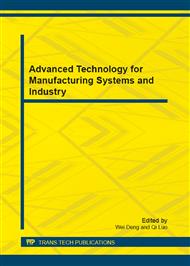p.247
p.251
p.256
p.261
p.265
p.273
p.278
p.283
p.289
The Research of Permanent Magnetic Field Treatment on the Iron & Steel Industry Circulating Water Impacts of Stability Index
Abstract:
Iron & steel industrial circulating water system there is a scaling and corrosion problems, the system fouling or corrosion may be judged by monitoring the water quality Stability index. In this paper, we use the magnetic treatment equipment developed by us in the laboratory to simulate the physical treatment process of magnetic field on the industrial circulating water system, and the experimental data is analysis by two-way ANOVA. We have found that: when the circulating water is tap water: (1) if water velocity is 0.6m/s, the magnetic field intensity, magnetic treatment time has a significant influence on the PSI, PSI decline with the magnetic field processing time to increase , and the PSI as well as the time have a good linear relationship; (2) if water velocity is 1.2m/s, the magnetic field strength has a significant influence on the PSI; (3) if water velocity is 2.3m/s, the magnetic field intensity and time has a significant effect for the PSI; when the magnetic field strength is 3.4T, and reaction time is 5 h, PSI is close to 6, water quality is stable; (4) speed and the magnetic field there is an interaction for PSI, that the magnetic field strength and speed of circulating water changes in the PSI also. When the circulating water is CaCl2 and Na2CO3 aqueous solution configuration: as water velocity is 1.2m/s and well as 2.3m/s, the magnetic field strength and time has a significant effect on the PSI .The results show that: iron & steel industrial circulating water system be deal with by proper the magnetic field treatment can control the PSI. The appropriate range PSI of the circulating water can reduce the fouling and corrosion damage, it is significant to develop circulating water system quality control model.
Info:
Periodical:
Pages:
265-272
Citation:
Online since:
November 2012
Authors:
Price:
Сopyright:
© 2012 Trans Tech Publications Ltd. All Rights Reserved
Share:
Citation:


